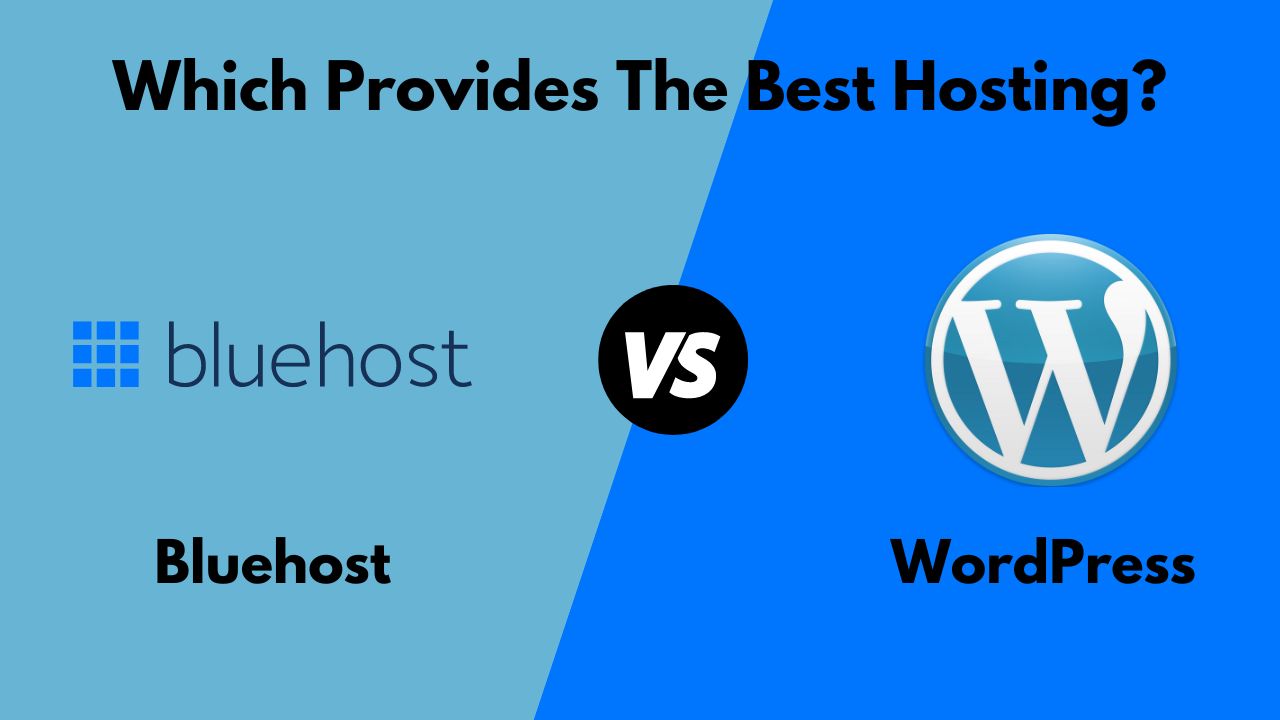
Bluehost vs WordPress: Which Provides The Best Hosting?
Bluehost vs WordPress To discern the extent of inexpensive and quick methods to establish a WordPress site, two of the most popular businesses to consider are WP Engine and SiteGround. They offer relatively highly appreciated hosting solutions on the Internet. One of the most significant differences is that WordPress.Such inflammatory content includes topics related to the dissemination of information and key moments in the development of the Internet. webs.com offers you a free plan along with a variety of paid hosting packages! However, there are a few challenges associated with the free plan which are as follows:
This detailed comparison of the two will focus on the following two brands: Bluehost and WordPress. On the topic of com, several issues will be revealed since the two businesses are compared, including the variety of hosting plans they both offer, how they work and differ from each other, the host that loads the fastest, and many others.
A Brief Overview of Bluehost and WordPress.com
You can download the free WordPress software from WordPress.org, but to have your WordPress website accessible online, you’ll still need to register with a web host.
There are two ways to host your website: either register with WordPress.com and let them handle the hosting or pick an inexpensive general-purpose shared hosting company like Bluehost.
A new WordPress website may be quickly and easily created with just a few clicks thanks to the free and premium hosting plans available on the WordPress.com website.
There are premium options available on the Bluehost website that also make it simple to start a new WordPress website.
Although WordPress.com and Bluehost both offer WordPress website hosting, there are several differences between them. This evaluation discusses these differences, including features, performance, flexibility, and ease of use.
WORDPRESS.ORG OR WORDPRESS.COM?
You might find it a little difficult because WordPress.com and WordPress.Org are two websites with quite similar names.
In summary, you can find the WordPress software on WordPress.org, where you can create self-hosted websites by registering with a web host. The WordPress.com website offers a service to host your WordPress website for you.
We’ve made an explanatory film that compares WordPress.org with WordPress.com so you can learn more about the latter and the publicly accessible WordPress software.
Now that we are aware of what WordPress.com and Bluehost provide let’s examine the features that come with each.
The Pricing of Bluehost vs WordPress.com
Plans from both hosts are available to fit any kind of budget. Also, with the aid of paying earlier for a complete year or longer, you may get better discounts from each host. If you are now not snug making a long-term commitment to a service you haven’t used earlier, WordPress.Com gives a seven-to-14-day go-back coverage, the same time as Bluehost offers a 30-day money-returned assurance.
The reality that WordPress.Com gives an unfastened plan is one of the other key distinctions between these two structures. In this publish, I’ll move over the variations between all of the WordPress.Com and Bluehost plans, but one fundamental disadvantage of the free plan is the presence of WordPress.Com advertisements for your internet site, which may not convey any revenue.
Plans for BlueHost Shared Hosting

Below is a brief summary of the key features of Bluehost’s shared hosting plans:
- Basic: One website can be hosted for $3.95 per month.
- Plus: Unlimited website hosting starts at $5.95 per month.
- Option Plus: Unlimited website hosting with additional features starting at $6.95 per month.
- Pro: Unlimited website hosting with more features and improved speed is available for $13.95 per month.
The costs shown above apply to new contracts; when the initial term ends, you will be responsible for paying the renewal fees.
Plans for Hosting WordPress.com

Similar to Bluehost, WordPress.com offers several programs. Here’s a brief summary of the many settings and the target audience for each, according to WordPress.com:
- Free: Best for getting started
- Individual – Ideal for individual use: $4 per month paid annually or $7 per month paid every month.
- Premium: $8 per month invoiced annually or $14 per month billed monthly is ideal for independent contractors
- Business: $25 per month billed annually or $33 per month billed monthly is ideal for small enterprises.
- eCommerce: $45 per month billed annually or $59 per month billed monthly is ideal for online companies.
If you would like to experience WordPress.com hosting, you may start with the free option and then move up the plans as and when you’d like. You can easily upgrade your account at any stage.
GET FREE DOMAIN SETUP
You may register a domain name for free with WordPress.com and Bluehost if you pay for a year or more in advance. After the first year, though, you’ll have to pay to renew the domain name.
To guarantee safe data transport, both hosts will add an SSL certificate from Let’s Encrypt to your domain. Visit the WordPress.com website’s SSL page to learn more about this.
Verdict: For those looking to launch a website without having to pay any money upfront, the Free WordPress.com plan is the best option. The least expensive WordPres.com plan is somewhat more expensive than the lowest-cost Bluehost plan, nevertheless. In actuality, though, the cost of the plan that best suits your needs will determine which one provides you with the most value hosting.
After discussing the costs of the hosting packages offered by WordPress.com and Bluehost, it’s time to contrast their key attributes.
User Experience
WordPress.com simplifies the onboarding process, making it easy to get started since it exclusively hosts WordPress websites. Similarly, Bluehost has improved its WordPress experience, now offering immediate WordPress installation upon signup.
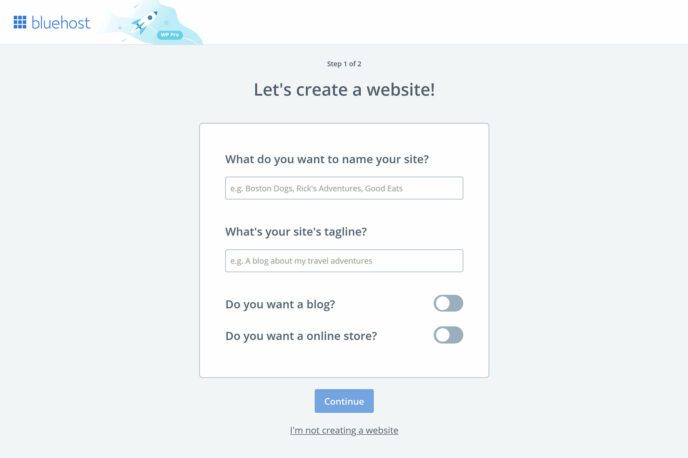
You can set up and publish your first content on your WordPress website with the use of handy wizards available from WordPress.com and Bluehost. This might be a huge assistance to you in getting started and navigating WordPress if you’re new to it.

However, the overall user experience can feel a little more intimidating because Bluehost offers far more functionality than WordPress.com, including the ability to manage subdomains, build various sorts of websites, and much more through its control panel. This is particularly true if you aren’t interested in the other features and just want a WordPress website.
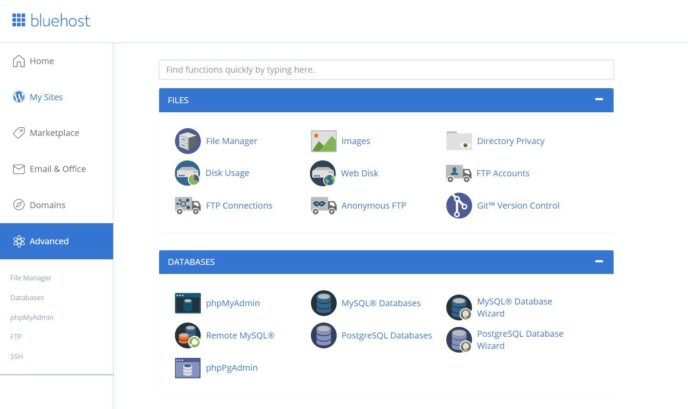
Bluehost offers more independence and flexibility than WordPress.com, allowing you to create and maintain your website in various ways, though this can make the service more complex. Differences also exist in the control panel, account management, and signup process.
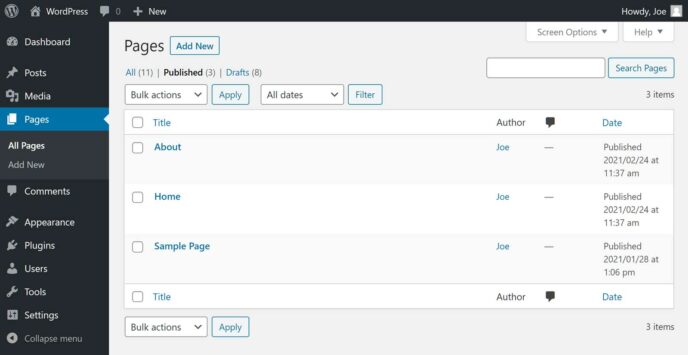
WordPress.com plans are more limited compared to the self-hosted WordPress experience from Bluehost. Your website creation experience with WordPress will vary significantly depending on whether you choose WordPress.com or Bluehost, and which plan you select.
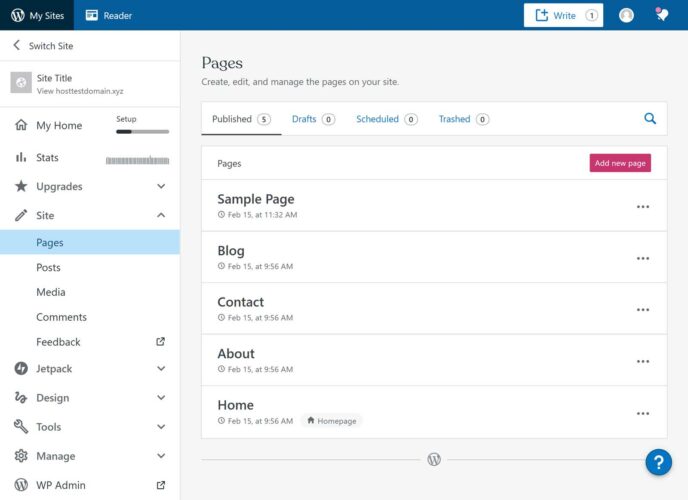
Verdict:
If you want a straightforward experience and support for WordPress websites, WordPress.com excels in usability and user experience.
Not because the Bluehost experience isn’t user-friendly; rather, it’s because the account area interface offers more options and settings in return for more flexibility. Getting where you want to go on the Bluehost account interface frequently requires additional steps.
WordPress Themes
The theme you select determines your WordPress website’s style. Depending on your choice, you can transform a basic WordPress installation into a creative photography portfolio, an online store, a professional-looking marketing website, or anything else you imagine.
It’s additionally easy to alter topics to give your website a one-of-a-kind look. The giant collection of free and premium themes is one of the primary reasons for WordPress’s popularity.
Both Premium and Free Themes
You can utilize any WordPress theme on your website when you register with Bluehost. But since their plans don’t include access to themes, you’ll need to get them from somewhere else, like ThemeForest or the Bluehost store. You may also explore and install free themes from within your WordPress dashboard with Bluehost due to the way WordPress operates.
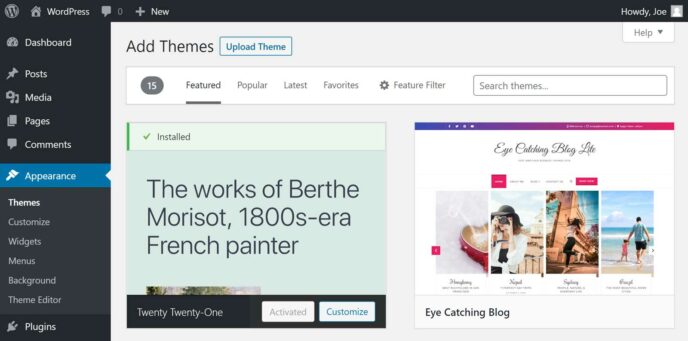
All of WordPress.com’s plans provide simple access to a collection of slightly more than a hundred free themes. You may also utilize the premium themes that WordPress.com offers if you select the $8 per month Premium plan or above.
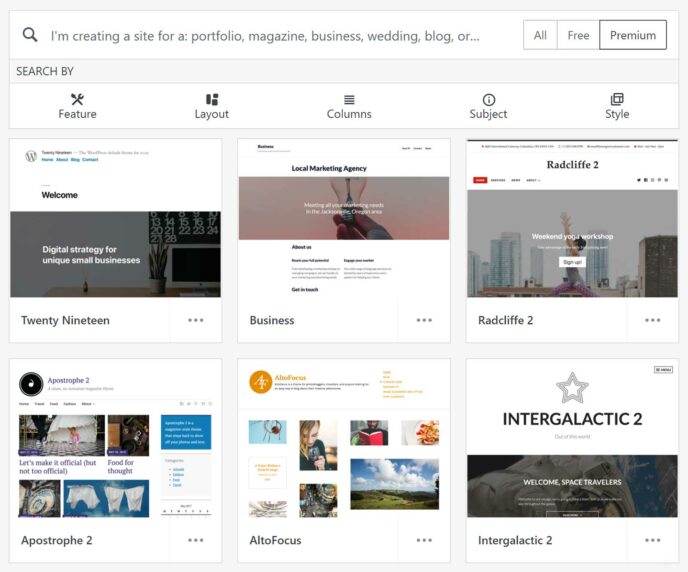
The WordPress.com staff and other developers created these themes, so you have a wide selection of alternatives to pick from for different types of website projects. Since these premium themes may run up to $150, it might be more enticing to pay for the Premium WordPress.com plan or higher if you can access a paid theme as part of your package.
These paid themes are viewable on the WordPress.com themes page, where you can also contrast them with the free themes that are your sole choices for the Free and Personal plans.
INSERTING WORDPRESS TEMPLATES
In contrast to Bluehost, however, the Business or eCommerce WordPress.com plans—which begin at $25 and $45 per month, respectively—only let you upload themes of your own choosing.
Check out the themes offered on WordPress.com’s Free, Personal, and Premium plans to see if there’s a suitable alternative for your website if you don’t want to pay for the eCommerce or Business plans to upload your own theme.
Conclusion: Although other WordPress plans provide you access to paid themes, Bluehost comes out on top since all of their plans allow you to upload your own custom themes.
WORDPRESS PLUGINS
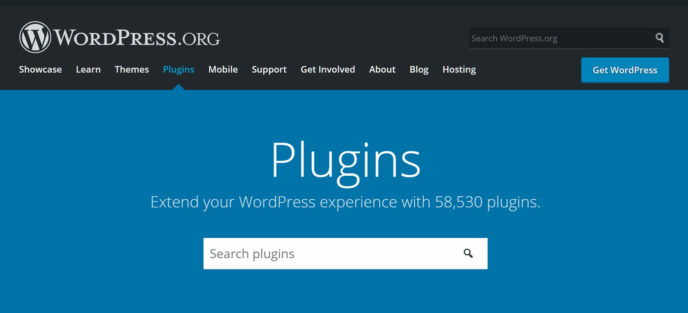
With the help of plugins, you can quickly and easily add a ton of new features to your WordPress website. Plugins manage the functioning and operation of your website, while themes are in charge of its appearance.
A simple WordPress blog may become a robust online store, a lead-generating tool, a company directory, and a host of other things, depending on the plugins you install. Additionally, you may utilize plugins—which are sometimes free—to add a single function to your blog, like a backup system, a page builder, or a contact form.
The hundreds of thousands of commercial and free plugins for WordPress, similar to themes, are another important factor in the program’s popularity.
Nevertheless, only the $25/month Business and $45/month eCommerce WordPress.com versions allow you to utilize plugins. Although I discuss many of the helpful features included with WordPress.com’s lower-cost plans in this comparison, plugins are not an option for adding more functionality.
Additionally, while the eCommerce and Business plans allow you to add plugins, some plugins are not allowed. Nonetheless, you’ll discover that these WordPress.com plans include the majority of the functionality in these prohibited plugins, such as caching and backups. As a result, you don’t really lose out on any features with these two plans; instead, you can’t pick how those benefits are provided.
On the corresponding WordPress.com page, you can see the list of prohibited plugins and the explanations for their exclusion.
Any WordPress plugin may be installed on your website, regardless of the Bluehost plan you select.
Verdict:
Since all of Bluehost’s plans allow you to utilize any plugin, they are the obvious winners in this contest. Since there is no need to bother about plugins, WordPress.com’s default feature set helps keep things simple.
Additionally, WordPress.com provides a more consistent user experience since it offers all functions directly through the website. In contrast, with Bluehost, you install plugins from various developers.
But in return, you’re giving up a great deal of independence. Additionally, compared to the more expensive WordPress.com plans, the cheaper ones don’t come with nearly as many features.
PERFORMANCE
Maintaining a website that loads quickly is essential to satisfying your visitors. Although Bluehost and WordPress.com both assert that they provide high-performance hosting, which is faster?
I made test websites that were almost identical to each other using both providers and then I used Pingdom to check each site’s page speed. We utilized the free Twenty Twenty theme for both websites, and the test page featured text and an image.
For seven days, Pingdom tracked the page’s performance every 30 minutes to get the average load time.
These are the outcomes.
Results of the Bluehost Performance Test
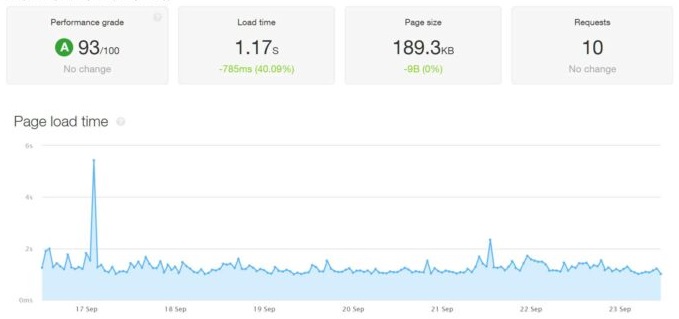
The average load time for the WordPress website hosted on Bluehost’s shared hosting service was 1.17 seconds. The Bluehost Plus plan with normal performance was used to host this website.
Although it costs more, the Bluehost Pro shared plan should provide quicker loading times due to its increased speed and processing capability.
Results of the WordPress.com Performance Test
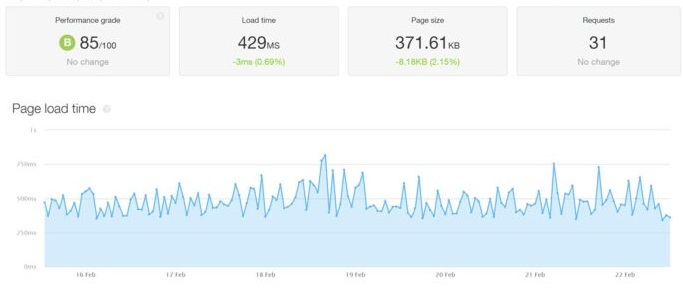
The average load time of the WordPress website hosted by WordPress.com was quicker, at 429 milliseconds, or 429 seconds.
This website uses the WordPress.com Premium plan for hosting; nevertheless, all WordPress.com plans offer the same performance level, unlike Bluehost.
Overview of Bluehost’s and WordPress.com’s Performance
The test site hosted on WordPress.com was noticeably quicker than the identical site hosted on Bluehost, as you can see. In actuality, there was a 0.741-second difference, or 63 percent quicker.
You will thus obtain a speedier website if you choose WordPress.com over the Bluehost shared hosting plan, according to my testing. Based on our SiteGround review results, WordPress.com is really significantly quicker than the quickest budget-shared server we’ve tested thus far.
Although the average load time of the Bluehost website is 1.17 seconds, you should aim for a speedier website to increase traffic and improve search engine results.
Read our in-depth WordPress.com hosting review and our Bluehost vs. DreamHost comparison to see the outcomes of our other performance tests. Find out how well these two businesses manage websites accessed by several users simultaneously.
Verdict: WordPress.com outperformed Bluehost with much quicker loading times.
STORAGE SPACE
Unlimited storage is included with all Bluehost plans except the entry-level plan.
While WordPress.com’s Free plan only offers 3 GB of storage, the Personal and Premium plans offer 6 and 13 GB, respectively, and the entry-level Bluehost plan offers a massive 50 GB of storage. 200 GB of storage is included in the top two levels.
With unlimited bandwidth available for all WordPress.com and Bluehost plans, you can forget about the number of visits to your website.
Verdict: Due to their plans’ significantly larger storage allotments, Bluehost prevails in this case.
Backups and Restores for WordPress websites
You need to install some kind of backup mechanism in case you don’t want to lose your internet site and its contents in the occasion of an emergency.
Fortunately, each Choice Plus and Choice Pro, the top two shared web hosting plans offered by Bluehost, include CodeGuard, a premium backup and recovery software.
As a result, your website will automatically backup every day, allowing you to restore it to a prior version.
Even without access to this service, users of the Basic and Plus shared hosting plans from Bluehost may still add a backup system to their WordPress website by downloading a free plugin like BackWPup or UpdraftPlus or by subscribing to CodeGuard.
Only the Business and eCommerce plans—the two most costly ones on WordPress.com—include access to a backup and restore tool. Choosing one of the more costly plans is the only method to restore your site to a prior version, as the less expensive plans do not allow you to install a backup plugin.
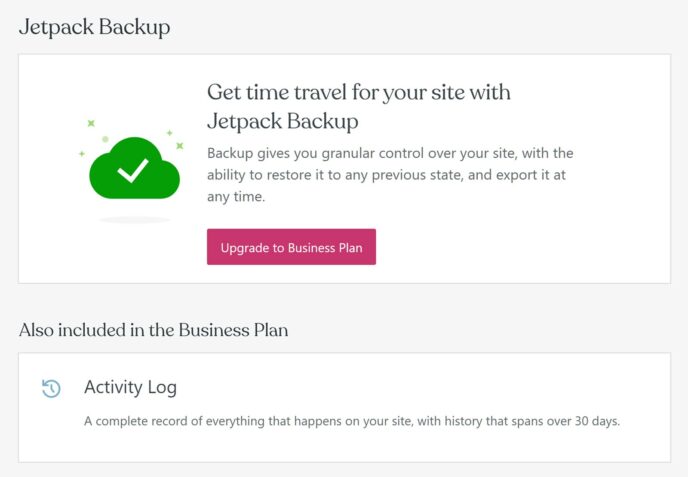
Verdict: Bluehost and its backup plugin support outshine the extremely capable WordPress.com backup and restore tool, which restricts access to users paying $25 a month or more.
A COMPARISON OF WORDPRESS.COM AND BLUEHOST SUMMARY
This concludes our comparison between WordPress.com and Bluehost. The two services are briefly summarized as follows:
- Cost: There is a free plan on WordPress.Com, but the entry-degree WordPress.Com paid plan is more expensive than the most inexpensive Bluehost plan.
- User Experience: Bluehost isn’t hard to apply; however, WordPress.Com offers a more consumer-pleasant enjoyment.
- WordPress Themes: Bluehost’s plans don’t offer access to any premium themes. However, certain WordPress.com plans do. You may upload any theme to any of the Bluehost accounts, but this feature is available only on the two most expensive WordPress.com plans.
- WordPress Plugins: Only the two most costly WordPress.com plans allow you to add plugins; however, you can do so on all Bluehost plans.
- Performance: In our load time test, WordPress.com outperformed Bluehost.
- Revenue: Although several WordPress.com plans provide strong revenue-generating tools, they also impose more stringent limits on how you may make money from your website. You have more total monetization opportunities with Bluehost because they offer plugins on all of their tiers.
- Storage Space: The amounts allowed for storage in the Bluehost plans are significantly larger.
- Backups: You can upload any theme to any Bluehost account, but only the two most expensive WordPress.com plans offer this feature.
- Staging: Bluehost gives its clients a staging option that allows them to make a safe clone of their website on which they can test updates. WordPress.com does not offer this functionality.
- Server & Database Access: Access to the server and database is included in all Bluehost plans with WordPress.com; this feature is limited to the company’s top two tiers.
- Support: You may reach Bluehost customer service by phone or by live chat. All of WordPress.com’s plans include email support, and some of the more costly ones also provide live chat.
Conclusion
The Free WordPress.com plan offers an excellent way to start without paying anything if you’re unsure whether you need a website or will still want one in a few months.
However, as we’ve seen, the Free plan has significant limitations compared to the full WordPress experience. Thus, you should consider upgrading to a premium WordPress.com plan if you begin to take your website seriously. These plans may grow pricey, particularly if you want to be able to fully personalize your website or use the themes and plugins of your choosing.
On the other hand, registering with Bluehost makes the most financial sense if you know you want a WordPress website, would like the full WordPress experience, and don’t want to pay $25 a month for the WordPress.com Business plan or above (which includes the full plugin and theme functionality of WordPress).
When compared to WordPress.com, your website may load more slowly, but you will have greater control over its appearance, functionality, and uses.
In this case, your best bet would be to go with the more costly WordPress.com Business or eCommerce accounts, which allow you to add plugins and themes if speed and freedom are essential to you and you don’t mind paying for them.
You can also read our related articles: